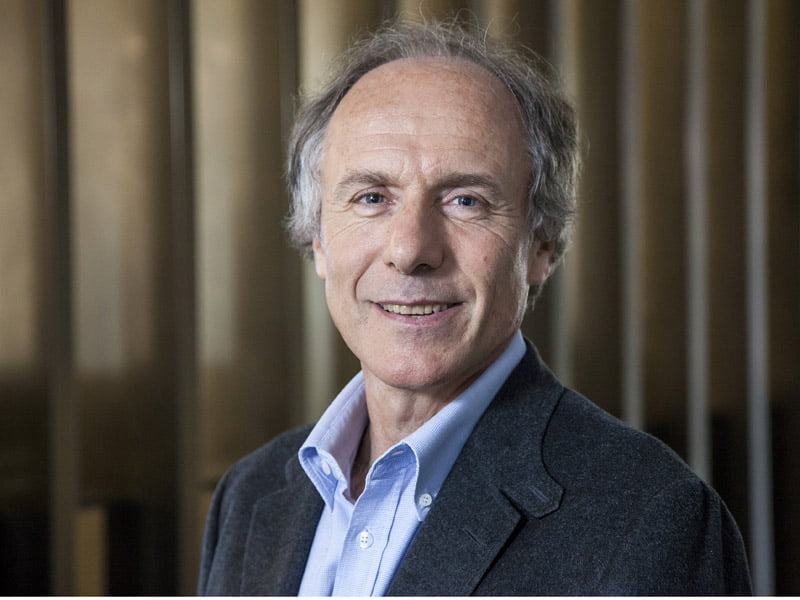Entrepreneurs and scientists share optimism as a common and defining trait and so it is quite likely that Australia’s Chief Scientist Alan Finkel – who has also been a serial entrepreneur in his career – has been given a double dose.
Faced with a somewhat tepid government response to the Innovation and Science Australia 2030 report, Dr Finkel is unfazed, preferring to welcome the progress and to take a longer view of the work that still needs to be done in the areas that were over-looked.
In other words, you just have to get on with it.

As the deputy chair of Innovation and Science Australia, Dr Finkel singles out the funding of the National Missions, the redrawing of the R&D Tax Incentive, and the review of the Australian Public Service as three important recommendations that government has adopted from the ISA 2030 that are exciting and should be welcomed.
The ISA strategic plan made 30 recommendations. In late May, the government quietly responded with support for 17 recommendations, ‘in principle’ support for 10 others, with the final three merely noted.
The 2030 strategic plan was the culmination of two years of significant work for Innovation and Science Australia, having been borne of the original National Innovation and Science Agenda announced in December 2015.
Dr Finkel says the ISA board is now working on a business plan for the next phase of its operation. But the recommendations in its 2030 strategic plan don’t go away, whether they were accepted and funded by government or not.
It’s a long game, he says. And this is the view of recommendations like the rebalancing of direct and indirect government support for R&D, and the call for a substantial increase in the Export Market Development Grant program.
“If I have learnt anything in my term as Chief Scientist it is that government can be quite slow to respond, but if you have a strong message that is supporting a clear benefit for the country, then the response you can get can be the positive one that you want,” Dr Finkel told InnovationAus.com.
This was certainly the case with the long term funding for national science infrastructure, which provided an average $200 million in (admittedly lumpy) new spending over 12 years. It took two reviews and a constant drumbeat of messaging since 2014.
“Similarly with the ISA report, I am hoping that we can continue to prosecute the case for government support for worthy commitments,” Dr Finkel said.
This is certainly the case with the redressing of the R&D Tax Incentive on the one hand, and the rebalancing of government direct versus indirect support for R&D.
Dr Finkel welcomed the realignment of the R&D Tax Incentive, which tightened eligibility requirements and better targeted the incentive to companies doing high intensity R&D. Ultimately this redesign aimed to reduce the cost of the scheme, to improve its efficiency and to encourage ‘additionality.’
The changes are anticipated to save $2.4 billion over the forward estimates. But while the ISA board had recommended that savings from the redesign of the tax scheme be used to increase direct government investment in R&D through grants, the government banked the savings.
“In terms of the rebalancing [of indirect versus direct government support], there is work that remains to be done,” Dr Finkel said.
“So what has been adopted through the budget will reduce the amount of money through the indirect scheme – the R&D Tax Incentive – which is not unreasonable given that it is being done through the focus on integrity and ‘additionality’,” he said.
“The concern that has been expressed [by some critics] – which is one that I share – is that not all the savings are being reinvested into mission-directed, direct investments into R&D, and in particular into translational research and development.”
“But this is not the end of the story,” Dr Finkel said. Because it’s a long game.
One key area of focus for the ISA board and for Dr Finkel is to find a way to improve Australia’s BERD numbers – that’s Business Expenditure on R&D.
It’s worth looking at the ISA 2030 strategic plan graph for a concise explanation here (Figure 7 on Page 17).
Government expenditure on R&D – including higher education – in Australia, Germany and Korea is equal to 0.9 per cent of GDP. These are good peers to have, given Germany and Korea are both innovation engines.
But the Business Expenditure on R&D in Germany is 2.0 per cent of GDP, and in Korea the BERD is 3.3 per cent of GDP.
This is where we are left behind. In Australia the business expenditure on GDP is 1.0 per cent.
So what is it about Australian businesses that just don’t invest in research and development? And what will it take to improve that BERD number? That graph is fundamentally perplexing, and is an area where the ISA will be applying itself.
Maybe there is a model for government direct support for R&D that can somehow trigger greater business investments. Or maybe it is simply attitude and culture in Australian business.
“As always it’s a bit of both. And we need to optimise the investments that government does make,” Dr Finkel said. “But business needs to step up to the plate as well.”
It is worth considering that those critics of the changes to the R&D Tax Incentive who say the best way to improve the BERD is by supporting the investment through tax breaks: Germany doesn’t offer any tax incentive for R&D at all, and yet its businesses manage to invest triple the level of Australian companies.
Do you know more? Contact James Riley via Email.

